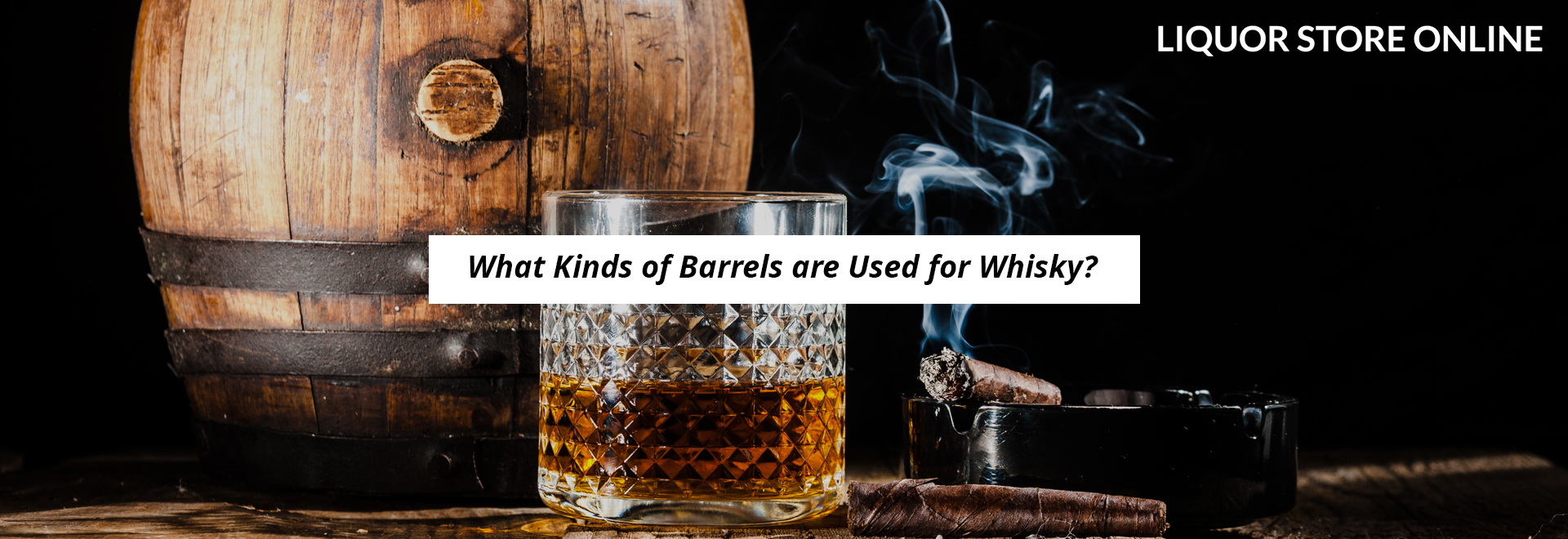Did you know there’s more than one style of barrel used in the aging of whiskey? Many people who love sipping whiskey and its variants don’t realize just how many subtle differences there are between the barrels and casks used to age their favorite liquor. But once you take time to learn about and understand these differences, you’ll be better able to pinpoint the flavors that make up your favorite drinks and find them in other styles of whiskey, too.
Factors to Consider
Before you can learn about the types of barrels used for aging whiskey, it’s important to learn a few factors that contribute to the different flavors, styles, and labels in the whiskey world, too. These factors vary from bottle to bottle and style to style, but they pertain to all whiskey on the market in some way. They also often help label whiskey a certain way or with a specific classification. These factors include:
• The barrel’s size. Different sizes of barrels create different flavors and richness of flavors throughout the whiskey stored inside.
• The barrel’s use. If it’s been used to age alcohol before, then it won’t have as much flavor left to impart to another batch. But sometimes, it soaks up the flavor of the previous alcohol and may be used to age a different kind the next time for a unique flavor combination.
• The amount of time the alcohol stays in the barrel. If the alcohol doesn’t age very long in the barrel, it won’t pick up much flavor. Of course, the longer it stays, the more flavorful it will become, but overdoing it may be a detriment to the liquor, too.
Types of Barrels and Casks
Now that you know some of the factors that go into picking the perfect barrel for a specific liquor, it’s time to learn about the different styles of casks and barrels used for aging whiskey.
• Oak barrels: This is a common type of barrel used for aging whiskey of all varieties. The oak wood creates a spicy aroma and flavor throughout the whiskey, and it adds a woody, bready taste to the drink as well. However, aging for too long in oak casks can cause problems and may make the liquor too spicy to achieve the end goal (unless that goal is spice). For this reason, oak casks are usually only used for shorter aging times and may not be used for long-term storage of whiskey.
• Cognac barrels: Cognac barrels aren’t very common in the world of whiskey, but they are still used sometimes. This type of barrel was once used for storing and aging cognac, so it’s packed with the rich and elegant flavor that goes along with this particular spirit. Cognac barrels tend to make whiskey a rusty color with several dried fruit flavors throughout. There may also be some notes of caramel or toffee present in this type of whiskey, and a few variations have some citrus aroma and flavor that comes from the cognac aging process, too. Whiskey isn’t often stored for very long in cognac barrels.
• Rum barrels: Yet another type of cask that isn’t used for long-term storage but is used for short bursts of flavor, rum barrels can make a whiskey much sweeter than it otherwise would be. This type of cask is usually used for storing whiskey only for a few months since the powerful tropical flavor of the rum would otherwise overtake the liquor too much. Combining the flavors of tropical fruit with the taste of smoky, creamy whiskey creates a robust but dessert-like sipping whiskey that’s popular with beginners to whiskey drinking as well as those who have been enjoying this beverage for years.
• Wine, Sherry, and Port barrels: Now we come to some of the most common types of barrels used for aging whiskey. Wine, sherry, and port barrels are all fairly similar and are all often used for different whiskey styles. Wine barrels tend to make whiskey taste sweet and fruity with some earthy and even nutty notes. Sherry casks also bring sweetness to the whiskey, along with dried fruit and significant orange tastes. Sherry also accentuates the natural smoky flavor of most whiskey at the same time. Finally, port casks bring a strong berry flavor with some cherry on the side which combines with the spicy notes of whiskey to create a perfect balance.
• Bourbon barrels: Yes, bourbon is a type of whiskey—but bourbon barrels are still often used for aging Scotch whiskey in many distilleries. In order for a bourbon to be classified as a bourbon, it must be aged in a new cask, so when these barrels are finished they still have a lot of life left in them. For this reason, they are often sold at relatively low prices to Scotch whiskey distilleries and used in their aging process. The end result of this trend is to bring the caramel and vanilla notes of the bourbon to the smoky flavor of the Scotch.
There may be other types of barrels and casks used in whiskey aging. This list only scratches the surface of what’s out there. Some more forward-thinking and creative distilleries may try aging in barrels that have never really been used before!
Conclusion
When you learn about how your favorite whiskey, bourbon, Scotch and other drinks are aged, you can have a better understanding of the production process from start to finish. Not only is this information interesting, but it’s also helpful in giving you more complete knowledge of what makes up the drinks you love. You can appreciate where your glass of whiskey came from and how long it took to reach you, and you can also find other whiskeys with similar flavor profiles that may interest you as well. Not to mention, you can show off a little of that knowledge to your friends and family when drinking together, too!
